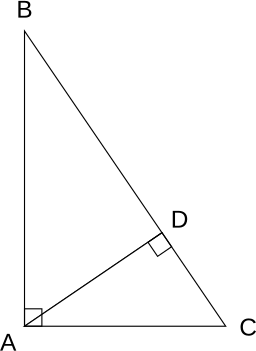 I was a year or so into writing a detailed genealogy when one of my distant cousins challenged my research discipline.
I was a year or so into writing a detailed genealogy when one of my distant cousins challenged my research discipline.
“You’re a fine writer, and you concoct very interesting ideas, but it means nothing if you don’t cite the references.”
As a past president of the Sons of the American Revolution, Glenn had spent years researching his family history. He happily shared with me, but wanted me to prove how I had reached my conclusions before he followed me down the rabbit trails.
I had to be disciplined to cite the references–just like in, gulp, geometry all those years before.
I didn’t mind sharing where I got my information, it just had never occurred to me it might be important.
(Geometry students, pay attention. You think it’s about the math–but it’s really about putting together a logical argument.)
Changing my focus
I became a fanatic about research discipline after that–a genealogy bore citing stats, references, and sometimes the entire story about how I ferreted out one fact or another.
My family yawned.
My genealogy cohorts cheered–they could trust my research once I showed my discipline in pursuing it.
Modern Research Discipline Techniques
A camera phone has helped research discipline in the years since I first approached libraries, microfilm, microfiche and fragile documents with paper and pencil (never pen in research libraries).
Now, I take a photo of folders, book title pages (including the spine for the reference number), library catalogue information and even where I park my car–all to help me keep track of information I need to know.
A personal scanner I can attach to my laptop computer also has been invaluable in keeping track of just where I found that tidbit of information.
I use a dedicated notebook for my current project–which is now full. When I need to know where I learned obscure facts such as how much YMCA secretaries were paid during World War I, I can check it.
I also make a point of copying URLs of documents I access on the Internet. Information goes into an email, including the quote I need, and send it to myself. I’ve got a folder in my email where I stick all the research and can pull it up when necessary.
Making notes
Using those same skills I honed so long ago, I can retrieve the 1895 mortality tables for Woolwich, England, or 1913 childbirth practices.
I use it to make voice memos of writing ideas or thoughts on my projects, which I transcribe later.
The same phone feature makes it easy to interview people.
I print out copies of documents and read them with different colored highlighters indicating where in the project that quote might go, or ideas I could use elsewhere.
And of course, post it tabs are invaluable–I even use them on library books and then transcribe whatever I want directly into a word document to save on my computer.
The point of all this is, unless I can tell someone where I found the information I’m using, the reference is too easy to challenge and my argument–whether in genealogy or my writing project–falls flat and can be discarded.
Research discipline is important, and in this day and age too easy not to use.
Tweetables
Tools for research discipline. Click to Tweet
The importance of research discipline. Click to Tweet
The truth about Geometry: research discipline practice. Click to Tweet





[…] Let me count the ways […]